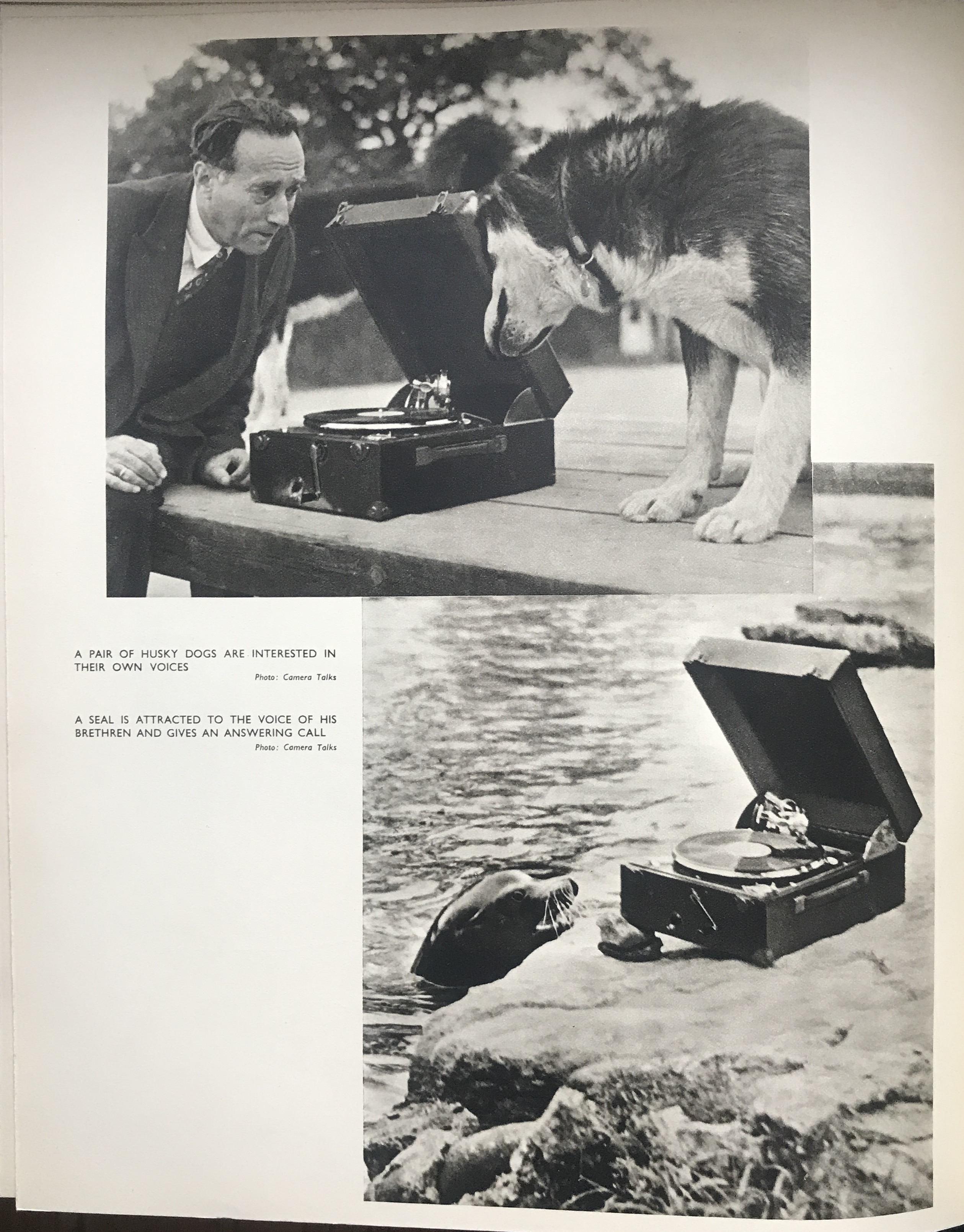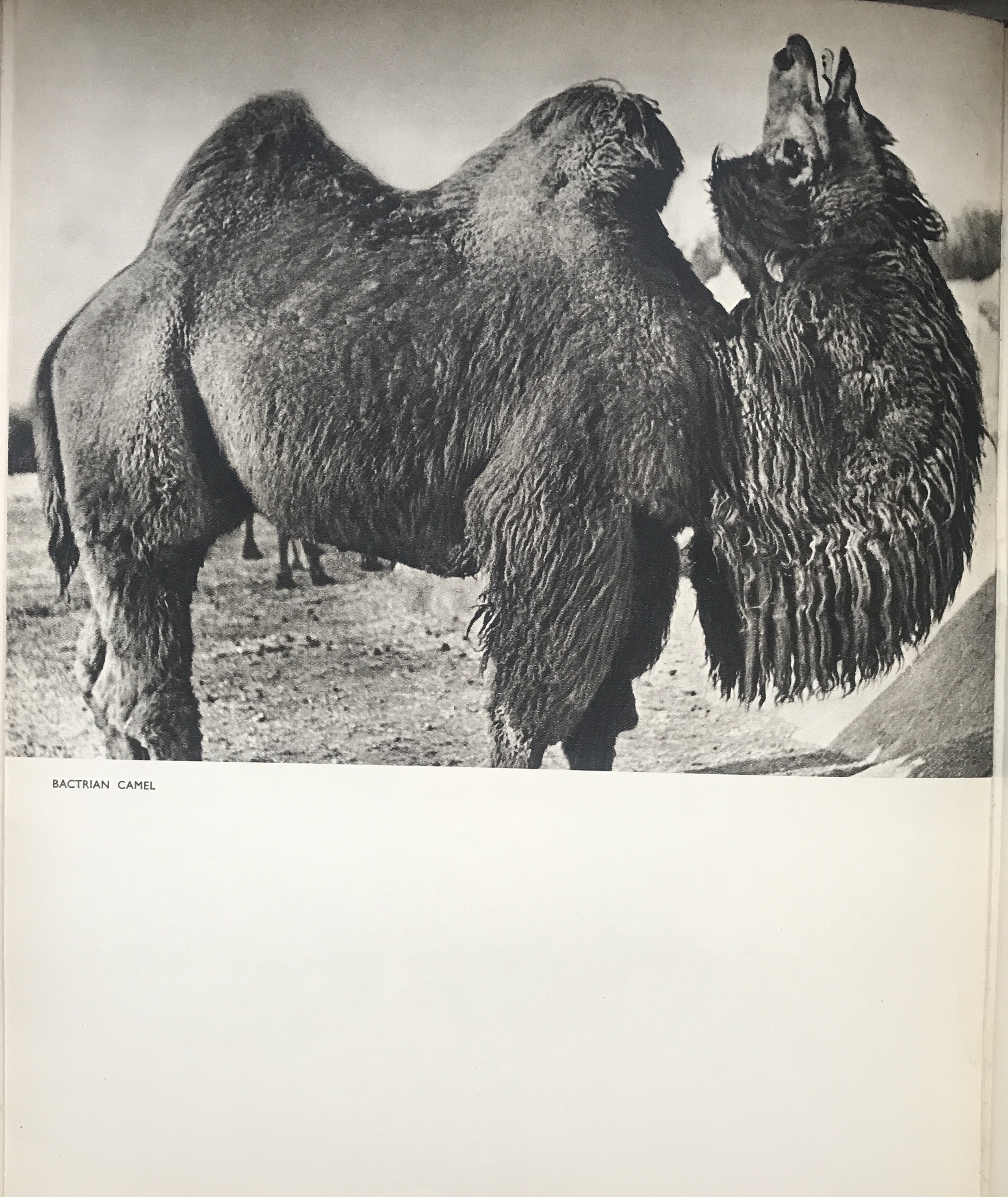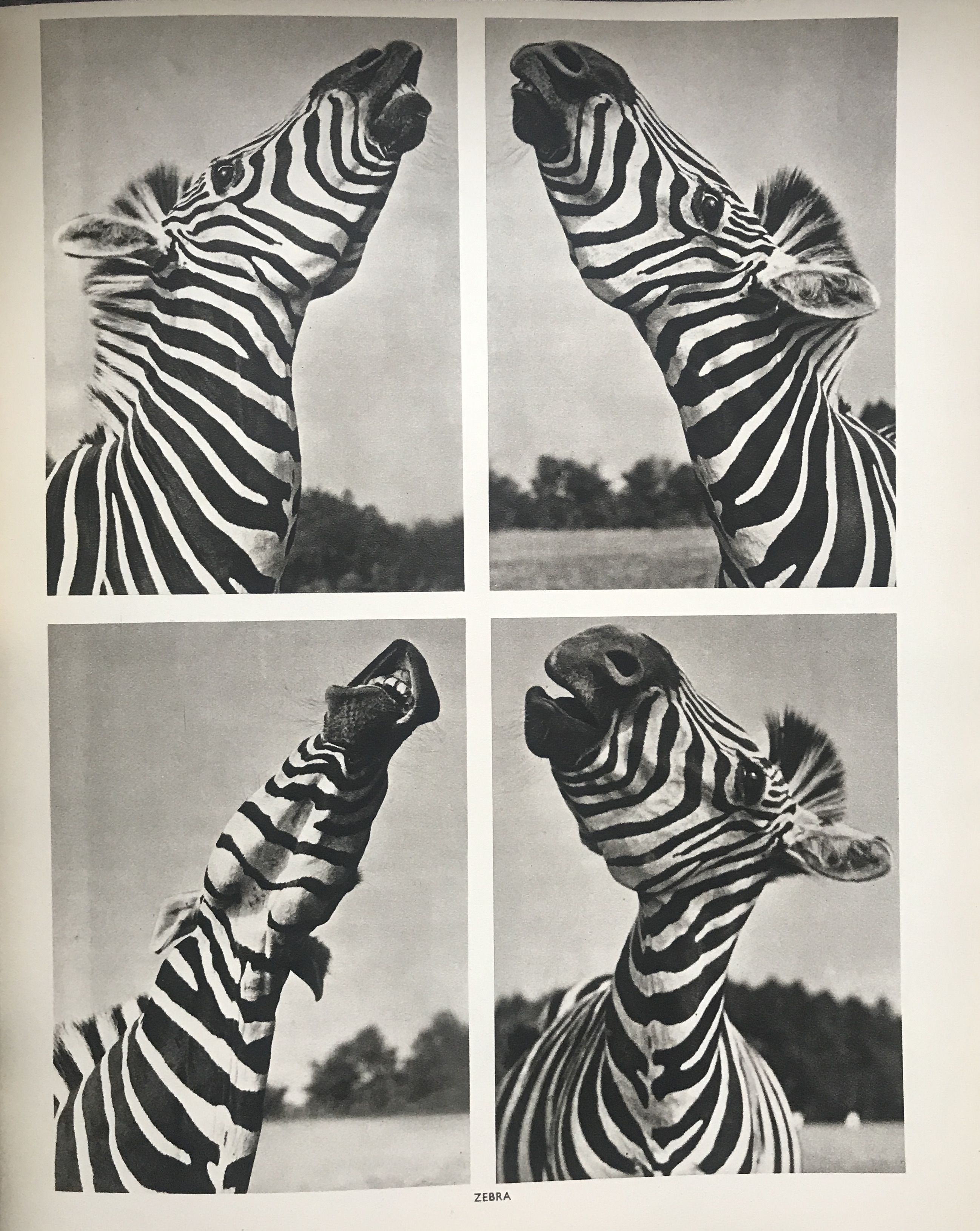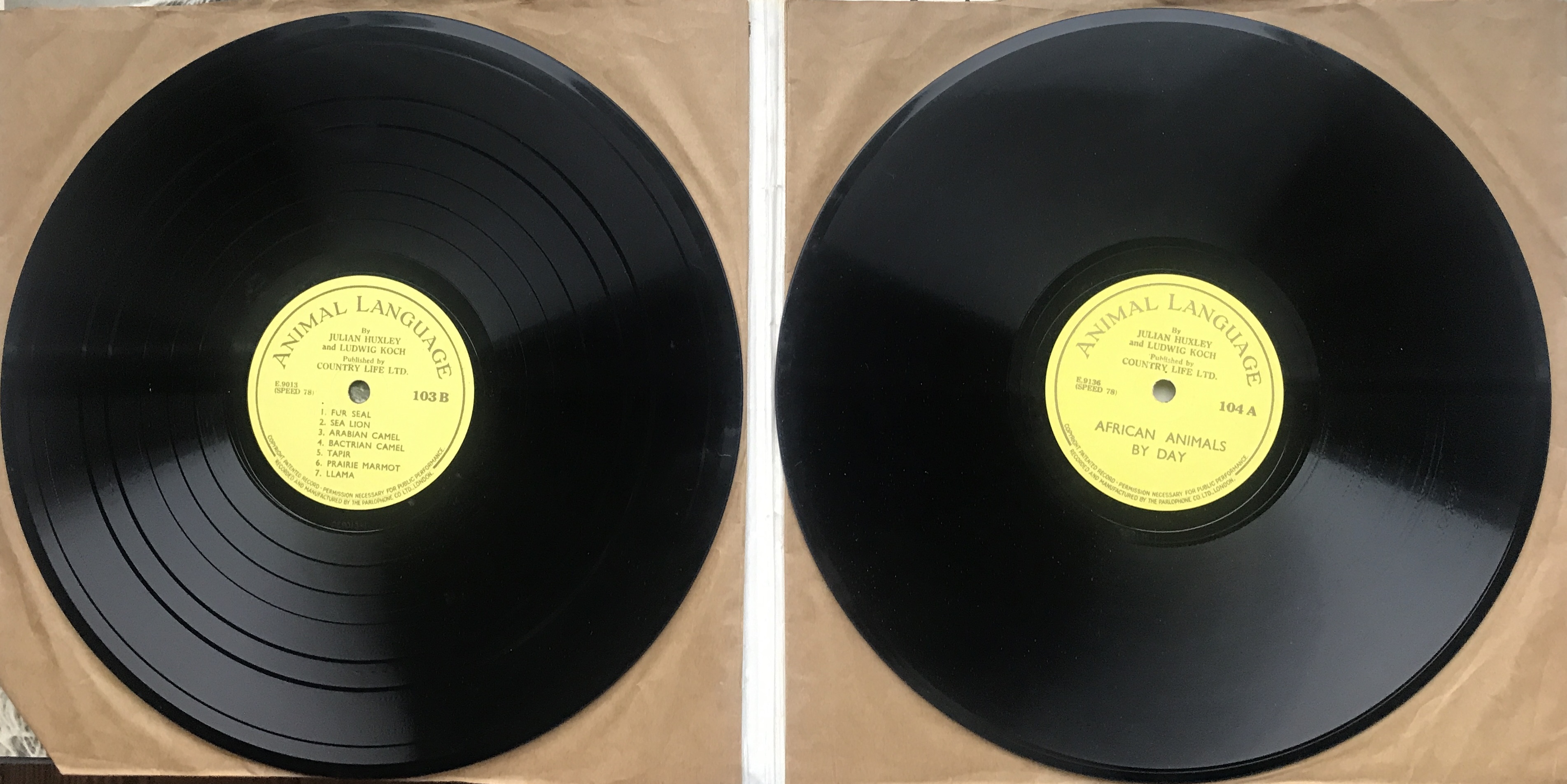Archive
Animal Language
- Sound Book
- Animal Language
Word Count: 2
- Julian HuxleyLudwig (Karl) KochYlla
- 1938
- 1938
Country Life, 2–10 Tavistock Street, Covent Garden, WC2 London.
- English
- London (GB)
In 1938, the London publisher Country Life published the Animal Language sound book which featured text by Julian Huxley, audio records produced by Ludwig Koch and photographs by Ylla.
Word Count: 28

Julian Huxley and Ludwig Koch. Animal Language. Photographs by Ylla. Country Life, 1938, cover (METROMOD Archive). Two records of animal voices were included with this sound book. 
Julian Huxley and Ludwig Koch. Animal Language. Photographs by Ylla. Country Life, 1938, p. xi: Ludwig Koch plays recordings of their own voices to the zoo animals (METROMOD Archive). 
Julian Huxley and Ludwig Koch. Animal Language. Photographs by Ylla. Country Life, 1938, p. 13: Bactrian Camel (METROMOD Archive). 
Julian Huxley and Ludwig Koch. Animal Language. Photographs by Ylla. Country Life, 1938, p. 15: Mandrill (METROMOD Archive). 
Julian Huxley and Ludwig Koch. Animal Language. Photographs by Ylla. Country Life, 1938, p. 52: Zebra (METROMOD Archive). 
Julian Huxley and Ludwig Koch. Animal Language. Photographs by Ylla. Country Life, 1938, two records included with the book (METROMOD Archive). Fischer, Andreas, and Judith Willkomm. “Der Wald erschallt nicht wie der Schrei der Steppe. Tierlaute im NS-ideologischen Kontext in Lutz Hecks tönenden Büchern.” Zwitschern, Bellen, Röhren. Tierlaute in der Wissens-, Medientechnik- und Musikgeschichte, edited by Marianne Sommer and Denise Reimann, neofelis, 2018, pp. 73–111.
Heck, Lutz, and Ludwig Koch. Schrei der Steppe. Tönende Bilder aus dem ostafrikanischen Busch. Knorr & Hirth, 1933.
Heck, Lutz, and Ludwig Koch. Der Wald erschallt! Das tönende Buch von Frühling und Herbst des deutschen Waldes. Knorr & Hirth, 1934.
Huxley, Julian. Ein Leben für die Zukunft. Erinnerungen. Translated by Wilhelm Höck, Paul List Verlag, 1974.
Huxley, Julian, and Ludwig Koch. Animal Language. Photographs by Ylla, Country Life, 1938.
Kevles, Daniel J. “Huxley and the Popularization of Science.” Julian Huxley. Biologist and Statesman of Science, edited by C. Kenneth Waters and Albert Van Helden. Rice University Press, 1992, pp. 238–251.
Sommer, Marianne. “Animal Sounds against the Noise of Modernity and War: Julian Huxley (1887–1975) and the Preservation of the Sonic World Heritage.” 19 January 2017, Journal of Sonic Studies, vol. 13, no. 13, 2017, https://www.researchcatalogue.net/view/325229/325230. Accessed 3 November 2020.
Sommer, Marianne. “Tierstimmen gegen den Lärm von Krieg und Moderne. Julian Huxley und das akustische Erbe in Soundbook, Film und Comic.” Zwitschern, Bellen, Röhren. Tierlaute in der Wissens-, Medientechnik- und Musikgeschichte, edited by Marianne Sommer and Denise Reimann, neofelis, 2018, pp. 113–143.
Vienna’s Shooting Girls – Jüdische Fotografinnen aus Wien, edited by Iris Meder and Andrea Winklbauer, exh. cat. Jüdisches Museum Wien, Vienna, 2012.
Ylla. Ylla’s Animals. Methuen Publishers, 1937.
Ylla. Ylla’s Dog Fancies. Methuen Publishers, 1937.
Ylla. Big and Little. Country Life, 1938.
Ylla. They All Saw it. Harper & Brothers, 1944.
Ylla. Dogs. Harper & Brothers, 1945.
Ylla. Animals. Intro by Julian Huxley, Hastings House, 1950.
Ylla. Two Little Bears. Hamish Hamilton, 1954.
Ylla, exh. cat. Musée Nicéphore Niépce, Chalon-sur-Saône, 1983.
Word Count: 301
- London
- Burcu Dogramaci. "Animal Language." METROMOD Archive, 2021, https://archive.metromod.net/viewer.p/69/1470/object/5140-11259860, last modified: 09-05-2021.
-
Julian HuxleyZoologistPhilosopherWriterLondon
Julian Huxley was the director of London Zoo from 1935 to 1942 and worked closely with emigrant photographers, artists and architects, including Berthold Lubetkin, Erna Pinner and Wolf Suschitzky.
Word Count: 27
Studies in Hand-ReadingBookLondonIn 1936, Charlotte Wolff’s Studies in Hand-Reading was published with analysis of the palms of Horst P. Horst, Aldous and Julian Huxley, Man Ray and Virginia Woolf, among others.
Word Count: 29
YllaPhotographerNew YorkYlla was an Austrian-born photographer who emigrated to New York in 1941. Specialising in animal photography, she produced not only studio photographs, but also shot outside on urban locations in the metropolis.
Word Count: 31